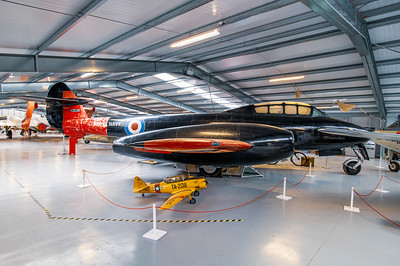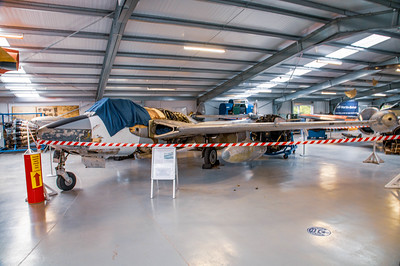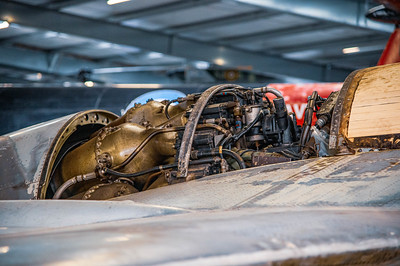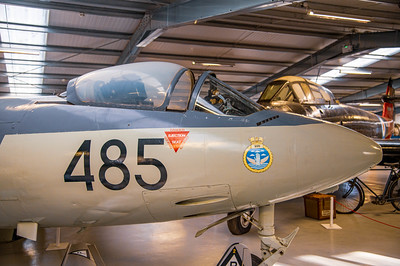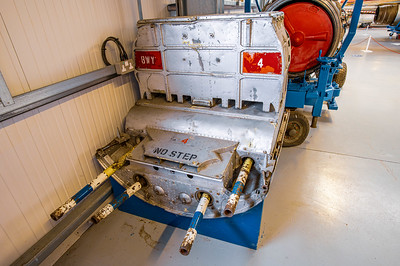Gloster Meteor T.7 VZ638
The Gloster Meteor is a twin-engined jet fighter, the first jet aircraft to serve with the RAF and the only Allied jet aircraft to reach combat in World War II. Almost 4,000 were produced, mostly in service with the RAF between 1944 and 1965. Meteors also served with the Royal Australian Air Force (RAAF), whose aircraft saw action in the Korean War; other users included the Argentinian, Brazilian, Belgian, Danish, Dutch, Ecuadorian, French and Israeli air forces
en.wikipedia.org
Two-seat trainer variant of the F.4, company prototype first flew 19 March 1948, 640 production aircraft for the Royal Air Force and the Royal Navy (43) and 72 for export (Australia, Belgium, Brazil, Denmark, Egypt, France, Israel, Netherlands). Avions Fairey modified 20 Belgian Air Force F.4s to T.7 standard.
en.wikipedia.org
